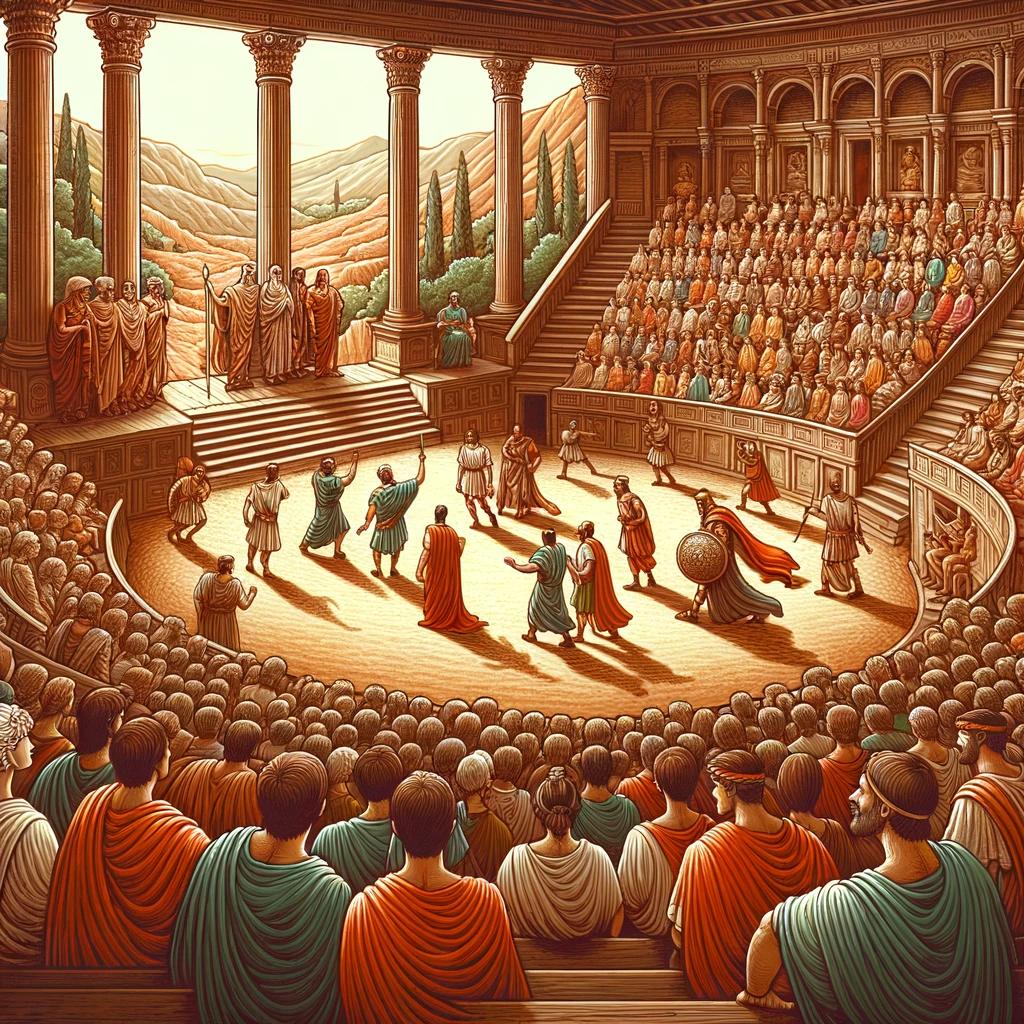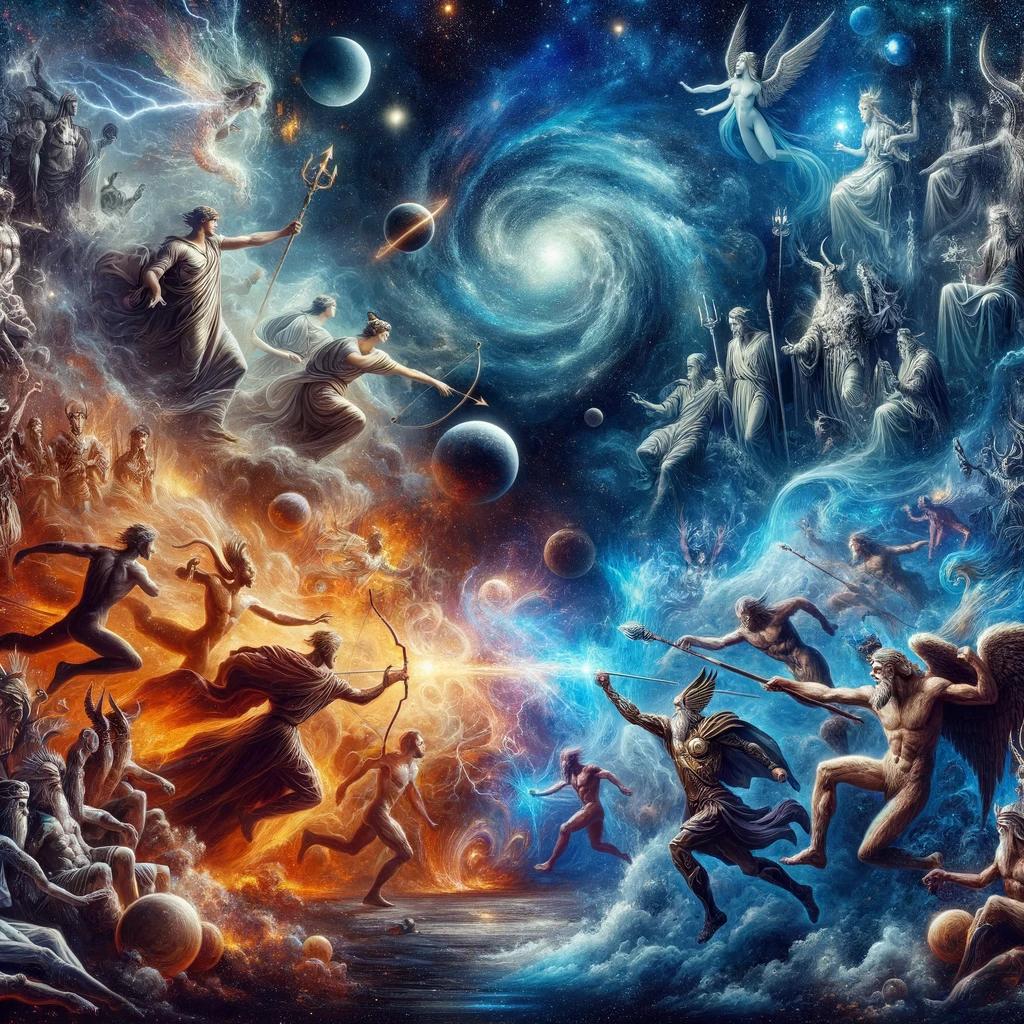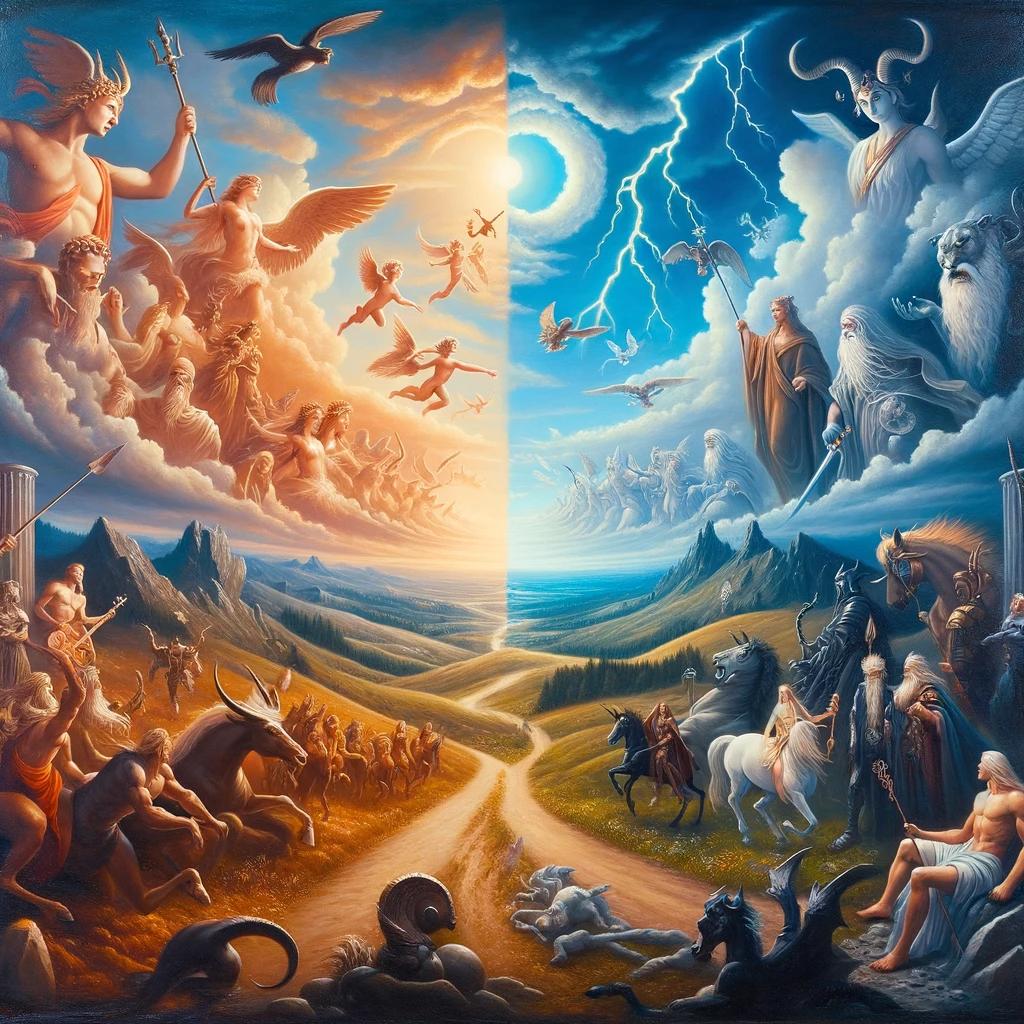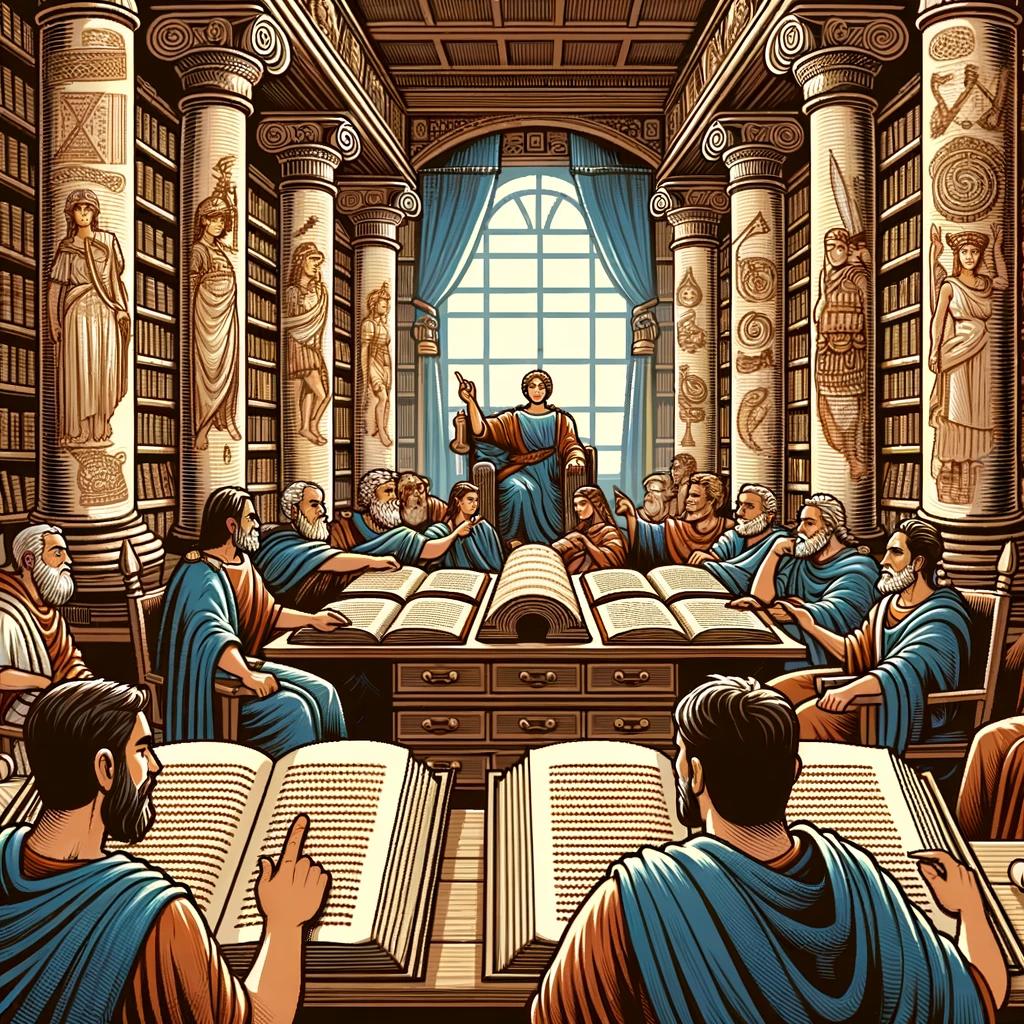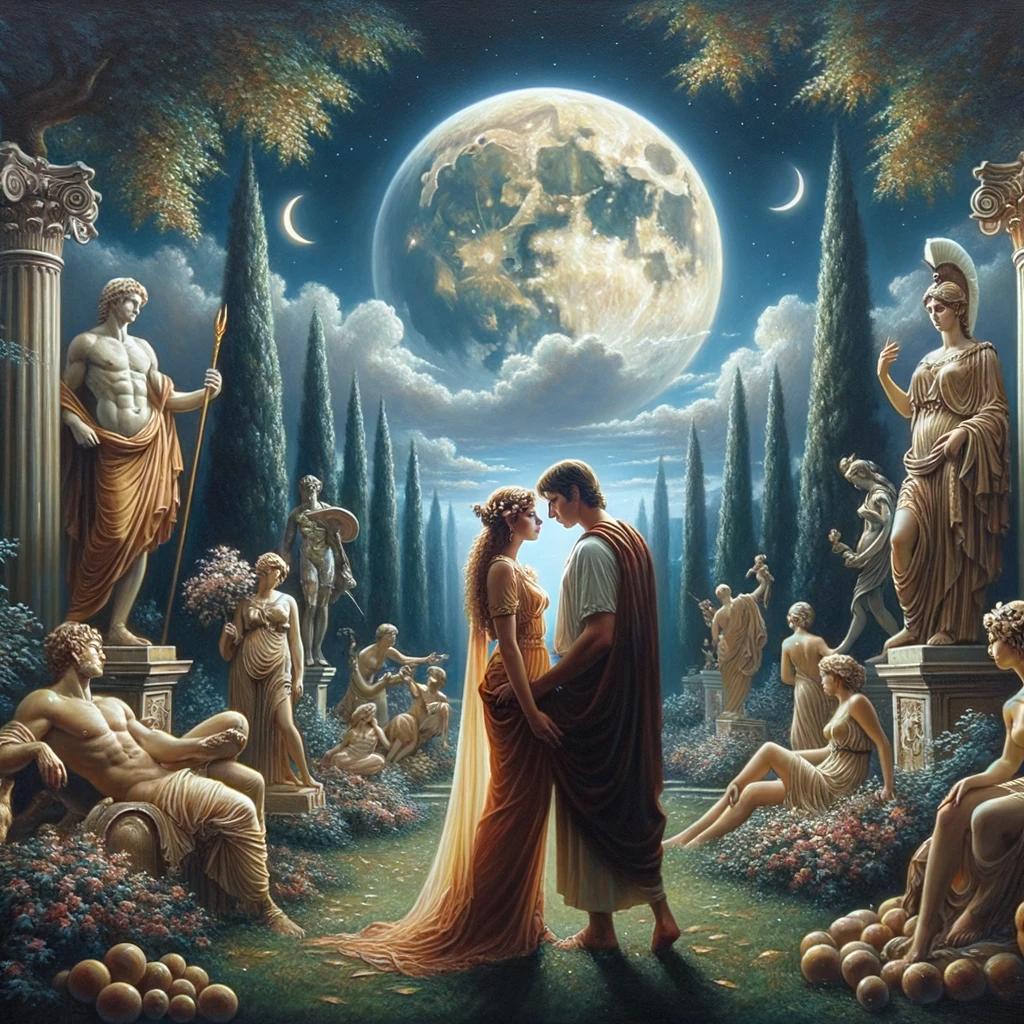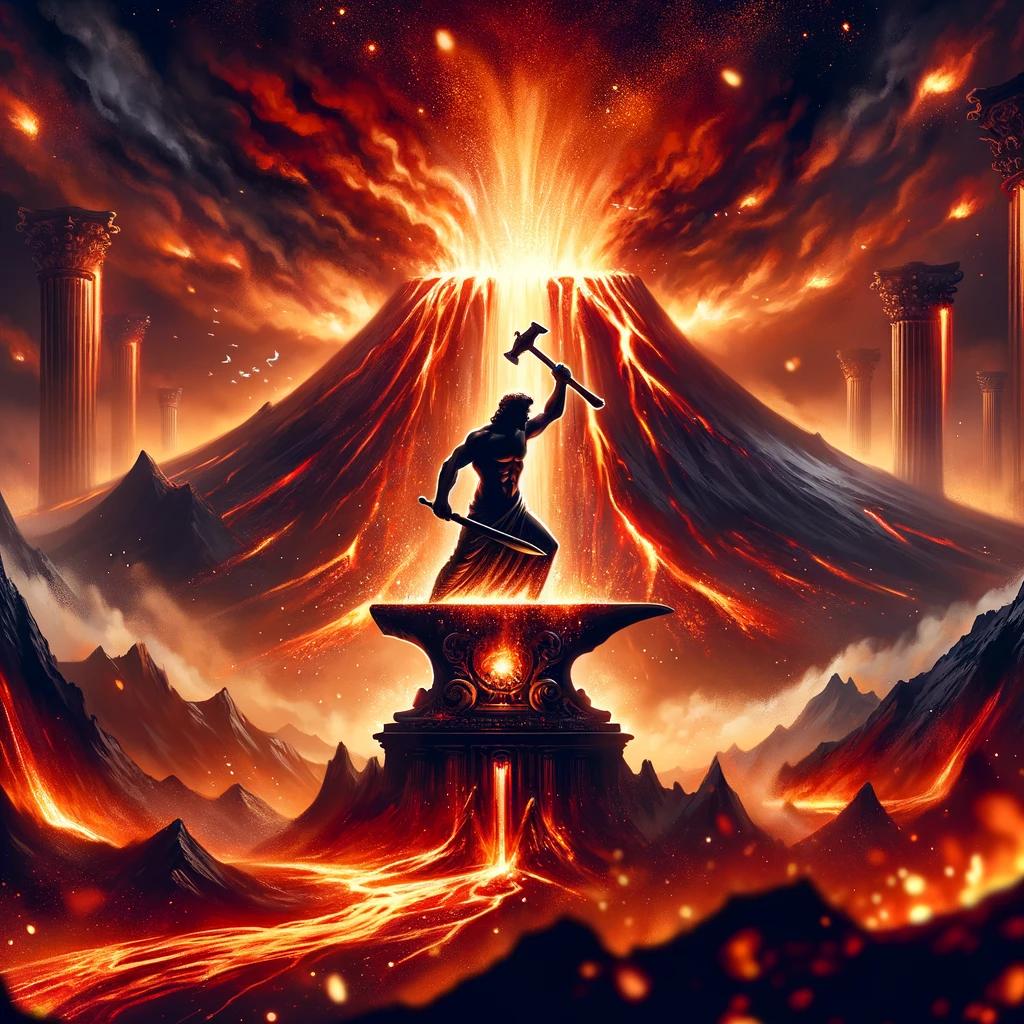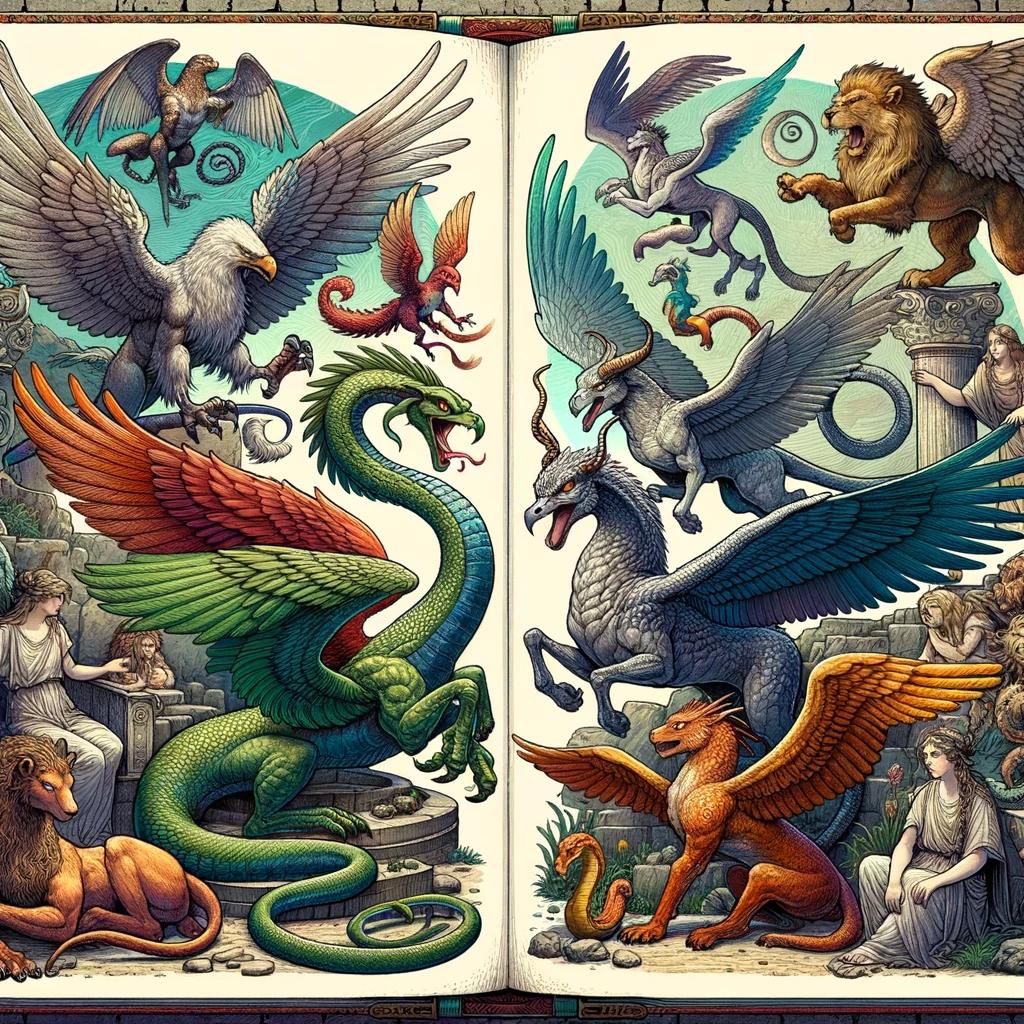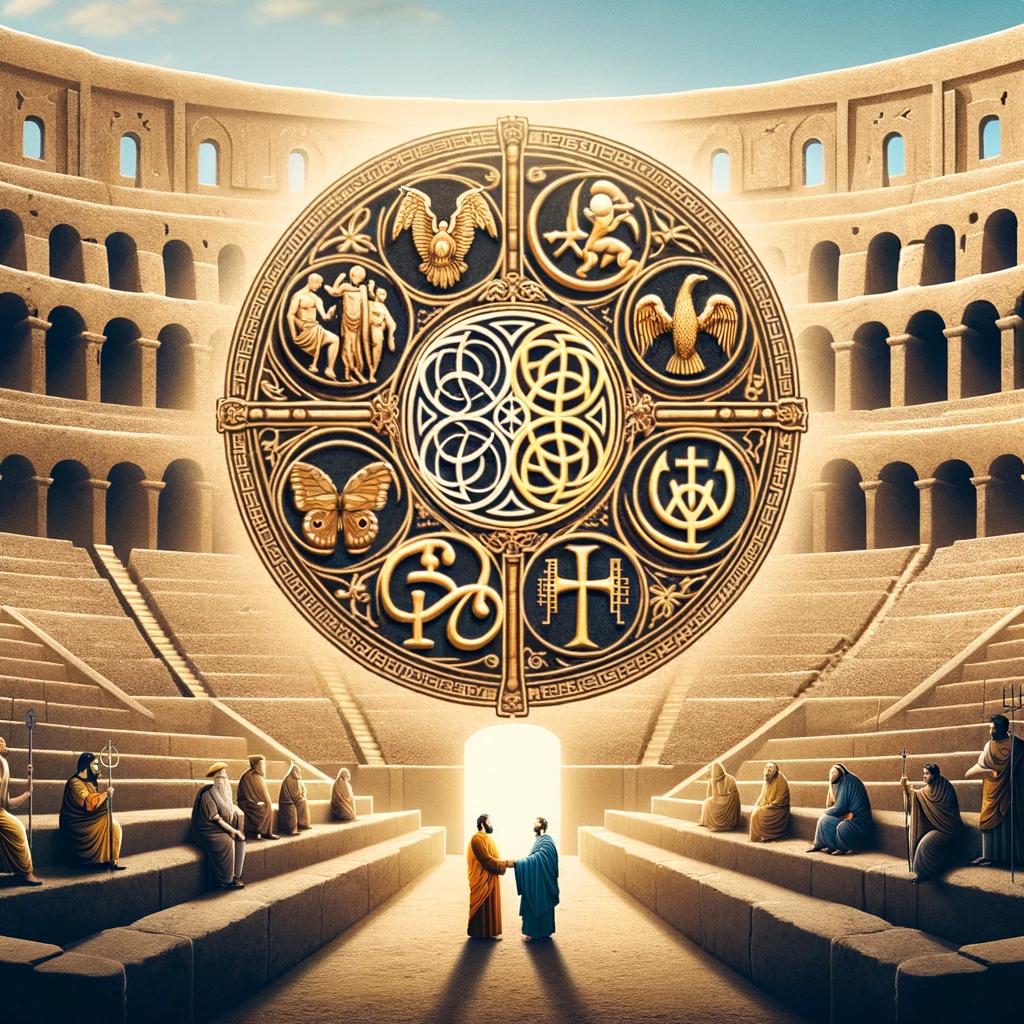Roman Mythological Stories: Exploring the Ancient Roman Beliefs and Legends
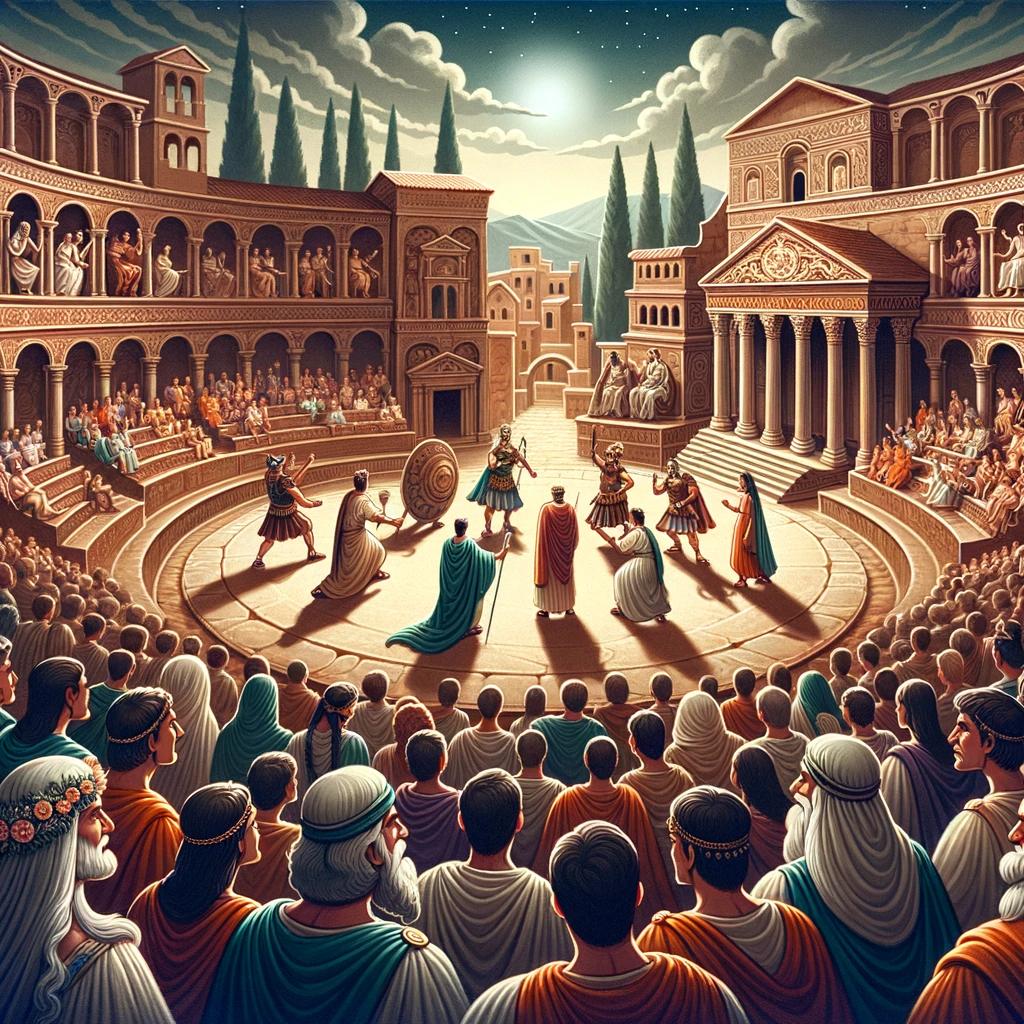
Roman Mythological Stories have long been an integral part of ancient Rome’s rich cultural heritage. From the legendary tale of Romulus and Remus to the significance of the foundation of Rome, these ancient myths and legends offer a glimpse into the beliefs and values of the Roman civilization.
Explore the gods and goddesses of Roman mythology, the courageous exploits of Roman heroes, and the tales of wise kings and rulers. Discover how Roman mythology has influenced art, culture, and morality, leaving a lasting impact on literature, entertainment, and contemporary interpretations.
The Legendary Tale of Romulus and Remus
The story of Romulus and Remus is one of the most famous tales in Roman mythology. According to the legend, these twin brothers were abandoned as infants and left to die.
However, they were saved by a she-wolf who nursed and raised them as her own. Eventually, they were discovered and brought up by a compassionate shepherd.
As Romulus and Remus grew older, they became leaders known for their bravery and sense of justice.
They embarked on a mission to establish a new city that would bear their name. However, their conflicting visions led to a tragic confrontation. Romulus, driven by his desire to build the city on the Palatine Hill, killed his own brother.
With Remus gone, Romulus went on to fulfill his vision, founding the city of Rome on April 21, 753 BCE. The tale of Romulus and Remus highlights the themes of sibling rivalry, destiny, and the sacrifices made in the pursuit of greatness.
It serves as a foundational myth for the birth of Rome, symbolizing the triumph and tragedy inherent in the city’s history.
- Romulus and Remus, abandoned twins, are saved by a she-wolf
- They are raised by a shepherd and grow up to be courageous leaders
- Romulus kills Remus in a dispute over where to build their new city
- Rome is founded by Romulus on April 21, 753 BCE
- The tale represents the themes of sibling rivalry, destiny, and sacrifice
The Foundation of Rome and Its significance
The legendary tale of Romulus and Remus is at the heart of the foundation of Rome.
According to the myth, these twin brothers were abandoned and raised by a she-wolf before being discovered and raised by a shepherd. As they grew older, they became courageous leaders and fought for justice.
However, their disagreement over where to build a new city led to Romulus killing Remus, ultimately paving the way for the establishment of Rome.
The foundation of Rome marks a crucial turning point in history.
With its establishment, Rome grew to become a dominant power that influenced the world for centuries to come. The city’s strategic location along the Tiber River, its fertile lands, and its proximity to trade routes contributed to its growth and significance.
As Rome flourished, its foundation became a symbol of strength, resilience, and civilization. The city’s architectural marvels, such as the Colosseum and the Roman Forum, showcased its grandeur and architectural achievements.
Furthermore, Rome’s political and legal systems, influenced by its foundation, became models for governance and justice.
The foundation of Rome holds immense cultural importance as well. It became the birthplace of Roman mythology, with gods and goddesses intertwined in the city’s origin and history.
The Roman pantheon, led by deities like Jupiter, Juno, and Mars, had an enduring impact on Roman religion, art, and everyday life.
The story of Rome’s foundation also carries symbolic significance.
It serves as a reminder of the consequences of ambition, conflict, and the pursuit of power. The tale of Romulus and Remus reflects the duality of human nature, with brotherly love and rivalry colliding in a tragic event that shaped the destiny of a burgeoning empire.
In conclusion, the foundation of Rome is a captivating tale that delves into the birth of an empire and its enduring legacy. From its humble origins to its rise as a global powerhouse, Rome’s foundation holds cultural, historical, and symbolic significance that continues to fascinate and inspire.
Gods and Goddesses in Roman Mythology
In Roman mythology, gods and goddesses held significant roles and were revered as powerful beings with unique attributes and responsibilities. Their stories reflect the values and beliefs of ancient Rome.
Two prominent figures in Roman mythology are Jupiter, the supreme god, and Hercules, a heroic figure who accomplished twelve labors. Let’s delve into their tales and explore their significance in Roman mythology.
Jupiter: The Supreme God of Roman Mythology
Jupiter, also known as Jove, was revered as the king of the gods and the ruler of the heavens. He embodied power, authority, and divine justice. As the god of the sky and thunder, he wielded lightning bolts as his weapon.
Jupiter was associated with the protection of the Roman state and was often invoked for guidance and blessings. His influence extended to various aspects of life, including governance, law, and weather.
Hercules and His Labors: A Heroic Figure in Roman Myths
Hercules, or Heracles in Greek mythology, was a legendary hero known for his exceptional strength and bravery. As a demigod, son of Jupiter and a mortal woman, he undertook twelve labors imposed upon him by Hera, the queen of gods, as punishment.
These labors included defeating fearsome creatures, capturing mythical beasts, and retrieving elusive objects. Hercules’ labors showcased his courage, determination, and endurance in overcoming seemingly insurmountable obstacles.
Labors of Hercules:
- Slaying the Nemean Lion
- Defeating the Lernaean Hydra
- Capturing the Golden Hind of Artemis
- Subduing the Erymanthian Boar
- Cleaning the Augean Stables
- Defeating the Stymphalian Birds
- Capturing the Cretan Bull
- Obtaining the Mares of Diomedes
- Stealing the Girdle of Hippolyta
- Obtaining the Cattle of the Monster Geryon
- Retrieving the Apples of the Hesperides
- Capturing and Subduing Cerberus, the three-headed dog
Hercules’ labors demonstrated his heroism, virtue, and his ability to overcome challenges, making him a revered figure in Roman mythology and an inspiration to both gods and mortals.
Roman Heroes and Their Exploits
The tales of Roman heroes are filled with bravery, loyalty, and determination. These legendary figures played significant roles in shaping the destiny of Rome. Let’s delve into the remarkable exploits of two notable heroes: Mucius Scaevola and Coriolanus.
Mucius Scaevola: The Brave Roman who Faced the Enemy
Mucius Scaevola’s story exemplifies unmatched courage and unwavering determination. During a war with the Etruscans, he infiltrated the enemy camp, intending to assassinate their king. However, due to a mix-up, he ended up killing one of the king’s advisors instead.
In a show of defiance, Mucius declared his true identity and thrust his hand into a nearby fire, enduring the pain without flinching. He vowed that he and other Romans would keep coming until the enemy was defeated.
This audacious act earned him the moniker “Scaevola” (meaning left-handed) and established him as an emblem of Roman bravery.
Coriolanus: A Betrayed General’s Change of Heart
Coriolanus, a renowned Roman general, turned his back on the city he once defended. Feeling mistreated by the Roman Senate, he joined forces with Rome’s enemies, seeking revenge and retribution. However, his mother and wife passionately pleaded with him to spare Rome, reminding him of his duty and the love he once had for the city.
Touched by their words, Coriolanus had a change of heart and ultimately forgave Rome. He realized the importance of loyalty and the greater good. This tale serves as a reminder that even the most resolute individuals can be swayed by love and familial ties.
- Mucius Scaevola exemplified unmatched courage and determination.
- Coriolanus showcased the impact of familial bonds and the power of forgiveness.
The stories of Mucius Scaevola and Coriolanus highlight the essence of heroism in Roman mythology.
They inspire generations with their extraordinary feats and demonstrate the values that were treasured within Roman society: bravery, loyalty, and compassion.
Legends of Roman Kings and Rulers
Legends of Roman Kings and Rulers delve into the fascinating tales of leadership and power in ancient Rome. These stories depict the wisdom and influence of notable figures in Roman history.
Two prominent legends in this realm are Numa Pompilius and The Sabine Women.
Numa Pompilius: The Wise King and his Divine Teachings
Numa Pompilius, a revered king of Rome, is renowned for his wisdom and religious teachings. According to legend, he received divine guidance from the nymph goddess Egeria. It is said that Numa established religious customs, promoting piety and virtue in the daily lives of Romans.
His reign focused on maintaining peace, cultivating wisdom, and fostering spiritual connections with the gods.
The Sabine Women: A Tale of Alliance and Unity
The tale of The Sabine Women recounts an extraordinary event in Rome’s early history. As Rome expanded, its male population far exceeded the number of women. In pursuit of peace, Romulus organized a festival and invited neighboring tribes, including the Sabines.
During the festivities, the men of Rome abducted the Sabine women. However, the women’s courage and their plea for unity resulted in a peaceful resolution, bringing together Rome and the Sabines in an everlasting bond.
The legends surrounding Roman kings and rulers provide insight into leadership, diplomacy, and the formation of alliances in ancient Rome. These stories highlight the significance of wisdom, divine guidance, and the pursuit of unity in a prosperous society.
Roman Mythology in Art and Culture
The legends and tales of Roman mythology have inspired and influenced various forms of artistic expression throughout history. From intricate paintings to magnificent sculptures, artists have depicted the captivating stories of Roman gods, goddesses, and heroes.
The visual representations of these myths not only showcased artistic skill but also served as a way to educate and entertain the Roman society.
Depictions of Roman Myths in Paintings and Sculptures
Roman artists often turned to mythology as a subject matter for their paintings and sculptures.
These depictions captured pivotal moments from familiar stories, such as the birth of Venus or the mighty Jupiter casting thunderbolts. Often portrayed in intricate detail and vibrant colors, these artistic creations aimed to transport viewers into the mythical world of gods and heroes.
One notable example is the masterpiece known as “The Birth of Venus” by Sandro Botticelli, which immortalizes the goddess emerging from the sea on a shell. This iconic painting showcases the allure and beauty associated with Roman mythology.
Sculptures also played a significant role in the portrayal of Roman mythology. The Romans were skilled in the art of sculpting, and they frequently created statues of gods and goddesses. These sculptures served not only as decorative pieces but also as objects of veneration, allowing individuals to connect with the divine beings they worshipped.
Influence of Roman Mythology on Roman Architecture
Roman mythology had a profound impact on the architecture of ancient Rome. The Romans believed that their gods protected and guided them, which led to the development of magnificent temples and religious structures dedicated to these deities.
These architectural marvels served as a visual representation of the Roman society’s religious devotion and the power of their gods.
One remarkable example is the Pantheon, a temple dedicated to all the Roman gods.
Its magnificent dome, a feat of engineering brilliance, represents the heavens and continues to inspire awe and wonder in visitors today. The intricate decorations and statues found inside the Pantheon reflect the importance of mythology in Roman religious practices.
Furthermore, Roman mythology influenced the design of public spaces, with statues and monuments depicting gods and heroes adorning city squares and triumphal arches commemorating military victories. These architectural elements not only beautified the cityscape but also served as a constant reminder of the significance of Roman mythology in Roman culture.
- Artistic depictions of Roman myths in paintings and sculptures
- Influence of mythology on Roman architecture
Roman Mythological Stories and their Moral Values
Honor, Justice, and Loyalty in Roman Mythology
Roman mythological stories are filled with examples of honor, justice, and loyalty that were highly valued in ancient Roman society. The gods and heroes portrayed in these stories often exemplify these virtues, serving as role models for the Roman people.
One such example is the story of Hercules and his labors. Despite facing numerous challenges and temptations, Hercules consistently demonstrated honor by completing his tasks with bravery and integrity.
His determination and sense of justice embodied the Roman ideals of honor and righteousness.
Similarly, the tale of Mucius Scaevola highlights the importance of loyalty and self-sacrifice. Mucius, a brave Roman who infiltrated the enemy camp, showed his unwavering loyalty to Rome by placing his hand in a burning fire as a sign of his determination.
This act demonstrated his commitment to the Roman cause and his willingness to endure any hardship for the sake of his city.
The moral values of honor, justice, and loyalty were not only present in the stories of gods and heroes but also emphasized in everyday life.
Roman society valued individuals who displayed these virtues, considering them to be crucial for maintaining a harmonious and just society.
The Role of Fate and Destiny in Roman Myths
Fate and destiny played a significant role in Roman mythological stories, providing a framework for understanding the events and outcomes in the lives of gods and mortals. The belief in a predetermined fate was deeply rooted in Roman culture and influenced their worldview.
Jupiter, the supreme god of Roman mythology, was believed to be the master of fate and had control over the destinies of both gods and humans. The Romans believed that their lives were governed by a predetermined course that was beyond their control.
One example of the role of fate is the myth of Coriolanus. Despite initially turning against Rome and allying with its enemies, Coriolanus ultimately had a change of heart. This change was largely influenced by his mother and wife, who pleaded with him to spare Rome.
This turn of events suggests that fate had a hand in shaping his destiny and guiding him towards reconciliation.
The concept of fate in Roman mythology served as a reminder that individuals should accept their destinies and make the most of their circumstances.
It instilled a sense of humility and acceptance, knowing that one’s actions were ultimately part of a larger cosmic plan.
- Honor, justice, and loyalty were highly valued in Roman society.
- Characters like Hercules and Mucius Scaevola exemplified these virtues.
- Fate and destiny played a significant role in Roman myths.
- Jupiter was believed to be the master of fate.
- The story of Coriolanus emphasizes the influence of fate on individuals.
Legacy and Significance of Roman Mythological Stories
The tales and legends of Roman Mythology have left behind a profound legacy that continues to impact various aspects of today’s society.
These ancient stories have shaped literature, entertainment, and even contemporary interpretations of Roman myths.
Roman Mythology’s Impact on Literature and Entertainment
The influence of Roman mythology can be seen in numerous works of literature, both past and present. Writers and poets throughout history have drawn inspiration from these mythical stories, incorporating them into their literary creations.
From epic poems like Virgil’s “Aeneid” to modern novels like Rick Riordan’s “Percy Jackson and the Olympians” series, Roman mythology has captured the imagination of many.
Moreover, Roman mythological tales have also found their way into the world of entertainment.
Movies, television shows, and plays often draw upon these stories, bringing them to life on the big and small screens. Whether it’s the legendary battles of gods and heroes or the intricate webs of mythical intrigues, Roman myths provide a treasure trove of captivating narratives for filmmakers and storytellers.
Contemporary Interpretations and Adaptations of Roman Myths
As society evolves, so does the interpretation of ancient myths. Roman mythology continues to be reimagined and adapted, allowing for new perspectives and fresh interpretations. Artists, writers, and creators take elements of these stories and infuse them with contemporary themes, making them relevant and relatable to modern audiences.
Contemporary adaptations of Roman myths can be seen in various forms of media, from graphic novels that reinterpret mythological characters in a modern setting to theatrical productions that explore the timeless themes and conflicts present in these ancient tales.
These reinterpretations serve as a testament to the enduring power and relevance of Roman mythology in today’s world.
In conclusion, the legacy of Roman mythological stories extends far beyond ancient times.
Their impact on literature, entertainment, and contemporary interpretations showcases the enduring significance of these tales and their ability to capture the imagination of people across different generations and cultures.
.











